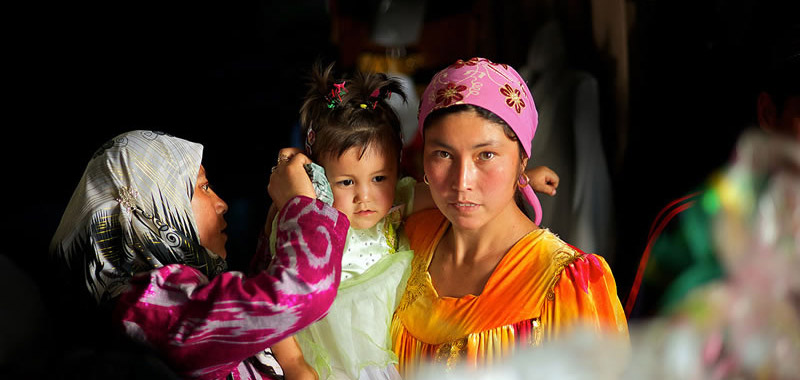
Digestif or AMARO?
August 9, 2022
Pirates of the Pacific
August 11, 2022Even in the developed world, where feminism has been a significant societal force for over a century, women continue to struggle within their cultures to gain equal power and legal status with men. In societies where feminism’s effects have been muted or non-existent, those struggles are that much more elemental. A case in point is Tajikistan, where women struggle to find their place in a society in turmoil. A civil war, a post-Soviet thaw, and resurgent traditions from the bedrock, patriarchal culture have thrown women back on their innate strength and resilience.
My recent trip to a lesser known corner of Central Asia revealed a country steeped in centuries of tradition and full of rugged, breathtaking landscapes. Today’s Tajikistan was created in 1924. It is the smallest and poorest central Asian country, with the shortest history as a nation-state. However, it is located in a region of Asia which has a 1000-year-old cultural legacy.
Tajikistan’s more recent history involves a period as a republic of the old Soviet Union, followed by independence and a bloody civil war when the Soviet Union collapsed. This desperately poor nation is now rapidly moving into new and unchartered waters in its history as it seeks to make its way as an independent state in a volatile and rapidly shifting regional context. During my short stay, however, it was the women of this extraordinary country that most captured my attention.
My first morning in Tajikistan, as I peered through the lens of my camera, I could see that there was no disguising the energy of these Central Asian women. They seemed emboldened in some way as, dressed confidently in vibrant colours, they strode purposefully forward into their day, many with babies swaddled to their bodies, others carrying heavy loads. As I focused in on their facial features, it seemed to me that Tajik women presented a dual face: I wondered how much this was to do with the complex mix of influences resulting from a former Soviet society, previously built on ancient Persian values, and now at the mercy of a new Islamic state. The more I observed, the more fascinated I became and the more anxious to understand their lives. I noticed some were barely visible beneath their veils, while others appeared quite Westernised. As a whole, the women of Tajikistan seemed to be in the midst of some kind of transition.
I was working with Charity Road Trips in Tajikistan, bringing aid to local children’s charities. During my ten-day trip, I travelled in predominantly male company. One of the few other women, Nizora, naturally became my friend and confidante. It was during one of our many discussions over Tajik lifestyle that Nizora revealed some of the truths behind my suspicions. Nizora herself, in her mid-thirties, goes out of her way to dress in as Western a way as Tajik norms allow. Her work as translator with the NGO Sworde Teppa puts her in the category of ‘women with aspirations’.
She would like most of all to travel to the West and start a life in a welldeveloped, affluent society. She sees little future for herself remaining in her country. Still living in her parents’ home, she is subject to the whims of an increasingly patriarchal society, which has been re-emerging as part of a complex system of expected gender roles, based around age old local customs and religious influences.
Nizora tells me: ‘I am noticing a creeping movement amongst young Tajik girls, as young as ten or twelve years old, to cover their heads with scarves. During my lifetime, I have never felt any compulsion to hide away. I worry that many young girls in Tajikistan today are only concerned about getting married. They have so few aspirations. Our education system has deteriorated since the Soviet collapse. Society has declined and there is extreme poverty in rural areas. People are looking for a new set of values. I am concerned that fundamental Islamic influences are spreading across the border into our country from Afghanistan. There is a feeling amongst young girls that dressing as a submissive Muslim girl will increase their chances of attracting a future husband, and that getting an education will be a passport to nothing.’
In what we like to see as a world which allows increasing opportunities for women, this would certainly seem a pretty dim view to take, but Nizora’s words are borne out by the facts. Since the early 2000s there has been a withdrawal of women from public life and a revival of traditionalism. Since the collapse of the Communist era, there have been significantly diminished levels of state support and an overall drop in the quality of education. As a result, women now predominate in the sphere of social work, especially in childcare and in the care of the elderly. In addition it is very evident that agriculture in Tajikistan is heavily propped up by the use of female manual labour. As we traversed a rugged Tajik terrain in our 4×4, one of the most frequent sights was a field full of women in brightly coloured headscarves, wielding old-fashioned hoes.
Salary rates are four to eight times lower in these traditionally women-dominated areas of labour when compared to other sectors such as industrial and construction, and twenty times lower than in banking and commerce, significantly influencing potential earnings. It also often ties women to the domestic scene, and helps to perpetuate the extreme levels of poverty that have become the norm among rural communities since the losses of the civil war of 1992 to 1997.
Tajik society seems unready to accept women in positions of authority, even as migration patterns impose ever greater responsibility on them. Figures for 2003 suggest as many as 347,000 predominantly male migrants left the country in search of work. Annually, around 84% of these go to Russia, often not returning, and entering into civil marriages abroad. This leaves an enormous burden on the abandoned women or ‘grass widows’, left to fend for themselves and their offspring in a country which still discriminates unfairly against women. There are no state allowances for single mothers and the very fields in which these women often toil for long hours are generally owned by men. Without a male family member, it is hard for women to obtain plots of land from privatised corporate farms.
However, in some corners, these women are fighting back with impressive entrepreneurial efforts. In the last year, these efforts have begun to pay off with a recent contest launched by the NABWT (National Association for Business Women in Tajikistan) to identify the best female entrepreneur in the country. There were several hundred contestants out of the country’s few female business owners (less than 15% of businesses are femaleowned).
As the women of this country emerge from a background of poverty, they have more reason than most to improve their lot. If you combine their resourcefulness and energy with the basic survival skills learned from an early age, and an ability to find stillness in their every day through innate spiritual values, all the elements for success would seem to be in place. The women I met on my travels, who spend their days sewing and tilling the land, cooking their home-grown produce on open fires, and doing their laundry in streams, are calm and grounded and very wise. They follow a form of folk Islam and, on the whole, seem to have the deep respect of the men and boys around them. In fact, ironically, despite society’s seeming disregard for female power and authority, certainly the older women are revered and respected in many communities as leaders and spiritual heads. Being both female and long past youth, I discovered, from day one, that I, too, was worthy of the typical Tajik greeting from both young and old male passers-by, one reserved for the wisdom and serenity of women: a reverential hand placed on the heart accompanied by a slight bow of the head. It has to be the reason for this incredible duality of Tajik women. It seems, on the one hand, they are left to do all the work. But, on the other, there is a deep appreciation in many quarters for their innate power. There are certainly some aspects of life in this unique land which I hope will not be lost in the usual crazed haste to become a developed nation. As in all Third World societies, there are lessons to be learned here for the West. These concern deeply-held principles and human values. These are found in the generosity and gentle relationships which typify simple village-living, along with a vibrant community spirit. While staying amongst these soft-hearted people, I witnessed a very pure form of humanity. If only all future progress could be founded on this base of innate and spiritual values, the people of this land, led by their women, might have the rare opportunity to go on appreciating basic human kindness at its best, long after the arrival of technological and industrial progress.




